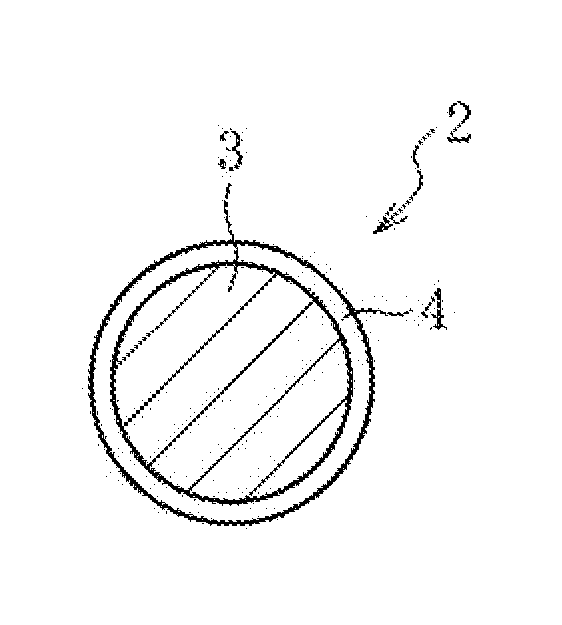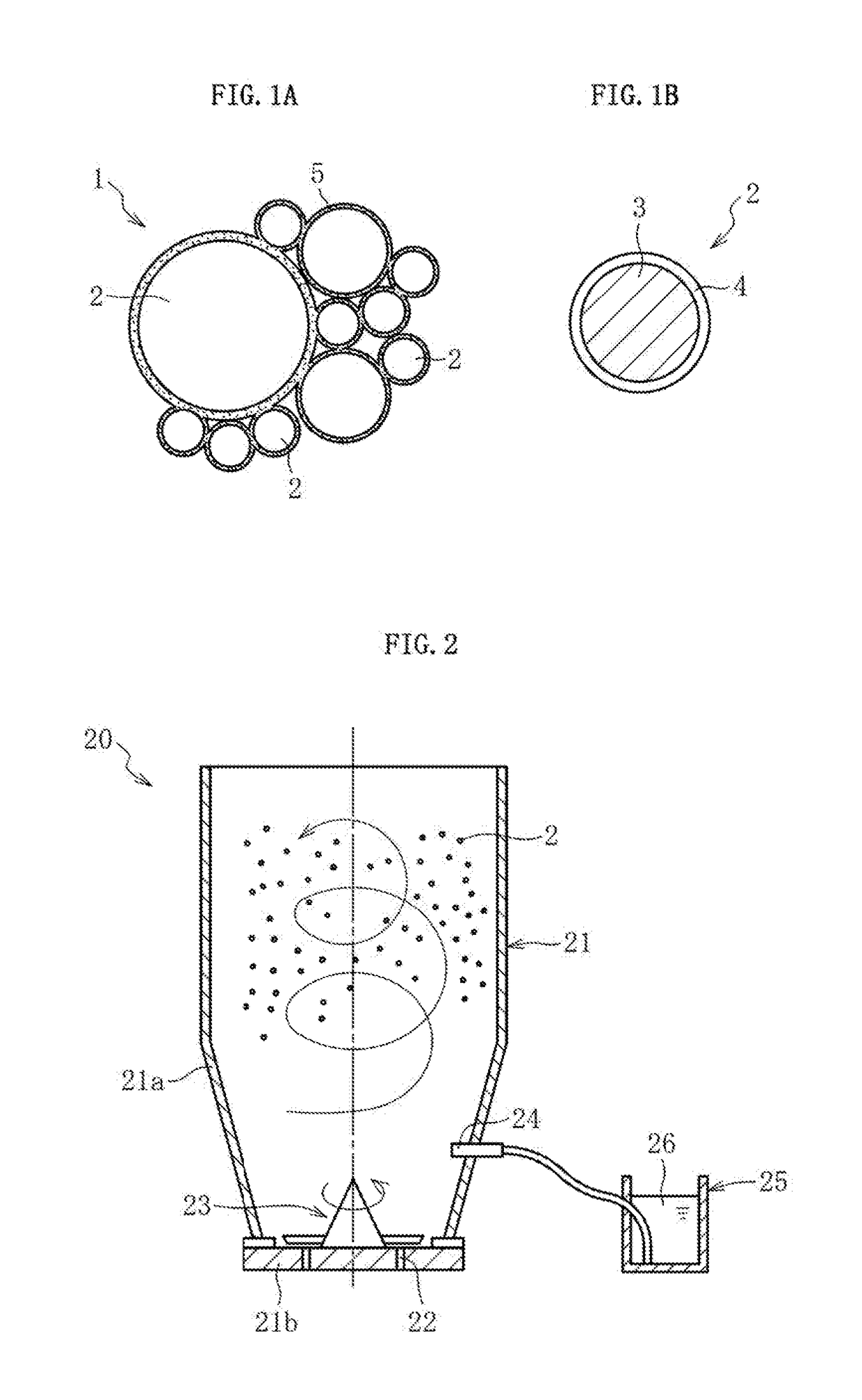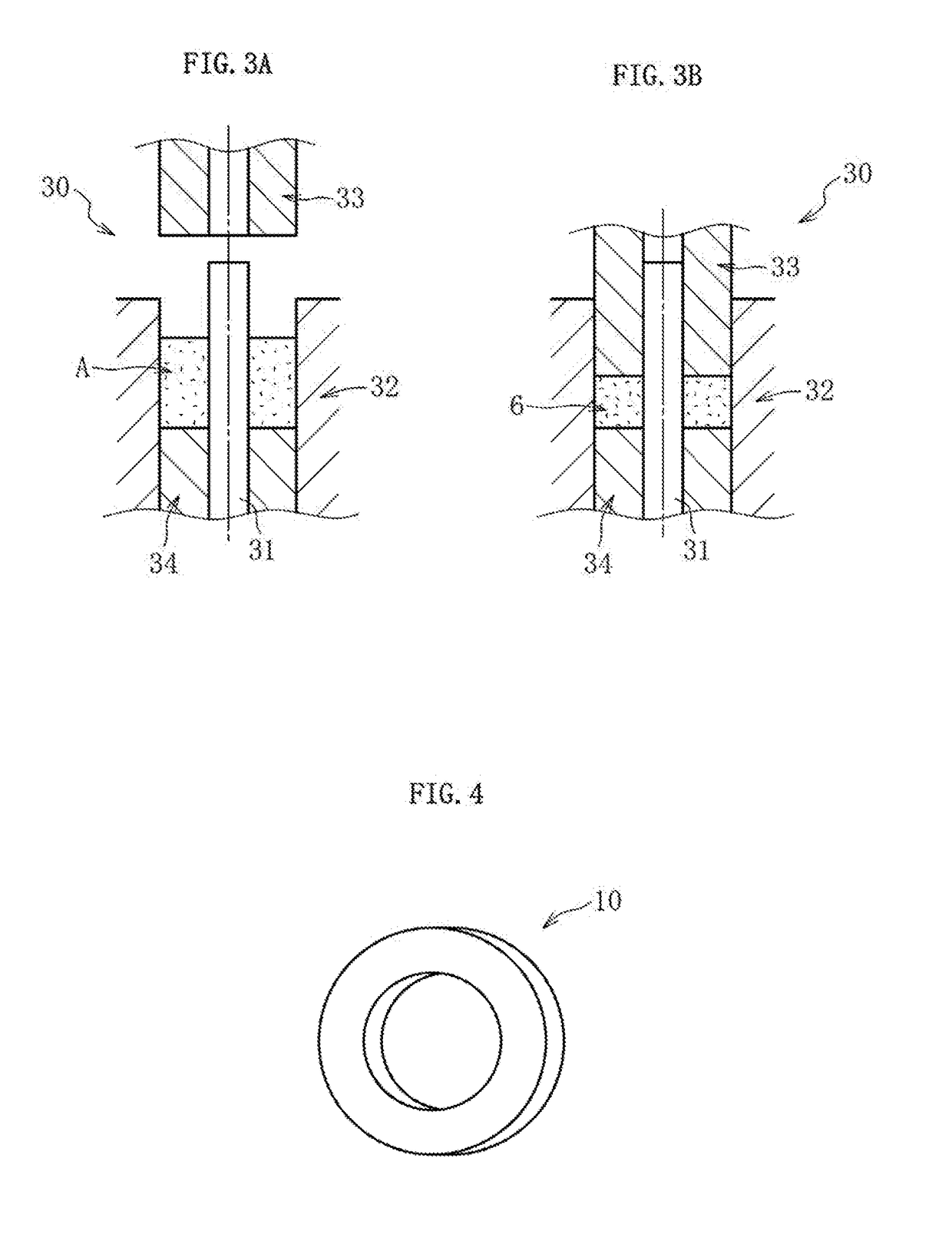Magnetic core powder, dust core, and method for producing magnetic core powder
a technology of magnetic core and powder, which is applied in the direction of magnetic materials, magnetic bodies, transportation and packaging, etc., can solve the problems of difficult to stably obtain a low-loss powder magnetic core having a low eddy current loss, high hardness of iron-based alloy powder, and poor plastic deformation during compression molding. , to achieve the effect of high density, high strength and excellent handling properties
- Summary
- Abstract
- Description
- Claims
- Application Information
AI Technical Summary
Benefits of technology
Problems solved by technology
Method used
Image
Examples
example 1
[0056](A) Iron-based amorphous powder having an Fe—Cr—Si—B—C-based composition and having a particle size distribution falling within a range of from 1 μm to 200 μm was prepared, and the iron-based amorphous powder was subjected to insulation treatment. Thus, magnetic powder in which the surfaces of the respective particles constituting the iron-based amorphous powder were each coated with an insulating coating was obtained. A material for forming the insulating coating was sodium silicate, and the thickness of the insulating coating was from about 5 nm to about 50 nm. The insulating coating was formed with the tumbling fluidized bed apparatus 20 schematically illustrated in FIG. 2, more specifically a tumbling fluidized bed apparatus MP-01 manufactured by Powrex Corp. In addition, PVA in which a polymerization degree and a saponification degree had been adjusted was dissolved in water as a solvent. Thus, a PVA aqueous solution containing 10 wt % of PVA and having a viscosity of 3 m...
example 5
[Example 5] to [Example 9]
[0069]The test pieces according to Examples 5 to 9 were each obtained by the same procedures as in Example 1 except that, in the above-mentioned procedures (A) to (D), a PVA aqueous solution having a viscosity of 15 mPa·s was prepared in the procedure (A) and the glass powder was blended (dispersed) in the PVA aqueous solution to be used in production of the granulated powder so that the blending ratio of the glass powder with respect to the iron-based amorphous powder was a value shown in Table 2 below in the procedure (B).
example 10
[Example 10] to [Example 14]
[0070]The test pieces according to Examples 10 to 14 were each obtained by the same procedures as in Example 1 except that, in the above-mentioned procedures (A) to (D), a PVA aqueous solution having a viscosity of 18 mPa·s was prepared in the procedure (A) and the glass powder was incorporated in the powder for a magnetic core so that the blending ratio of the glass powder with respect to the granulated powder (iron-based amorphous powder) was a value shown in Table 2 below in the procedure (C).
PUM
| Property | Measurement | Unit |
|---|---|---|
| particle size distribution | aaaaa | aaaaa |
| viscosity | aaaaa | aaaaa |
| particle diameter | aaaaa | aaaaa |
Abstract
Description
Claims
Application Information
 Login to View More
Login to View More - R&D
- Intellectual Property
- Life Sciences
- Materials
- Tech Scout
- Unparalleled Data Quality
- Higher Quality Content
- 60% Fewer Hallucinations
Browse by: Latest US Patents, China's latest patents, Technical Efficacy Thesaurus, Application Domain, Technology Topic, Popular Technical Reports.
© 2025 PatSnap. All rights reserved.Legal|Privacy policy|Modern Slavery Act Transparency Statement|Sitemap|About US| Contact US: help@patsnap.com



